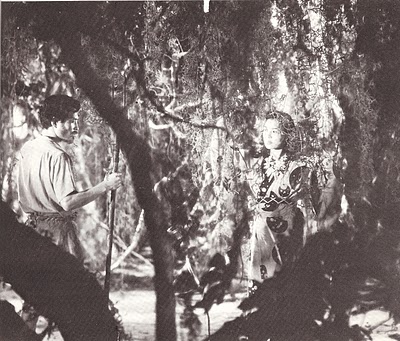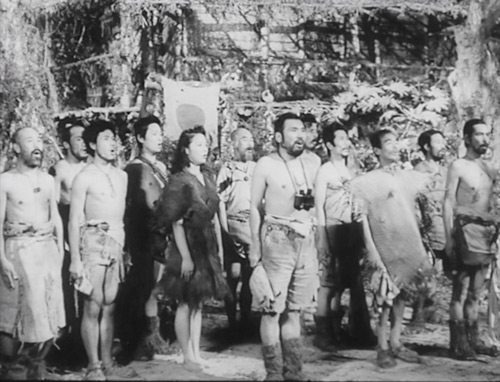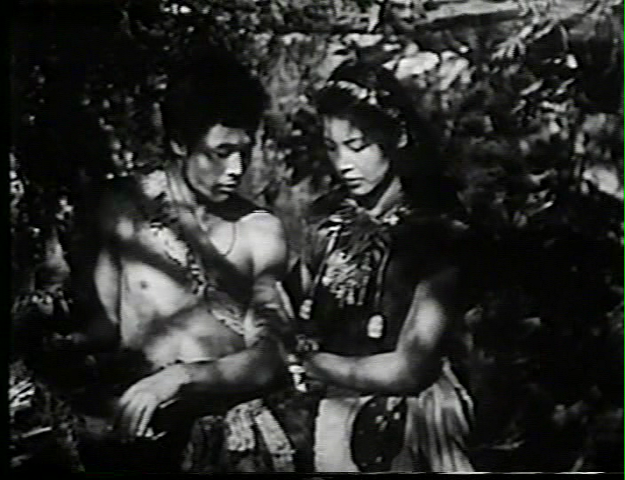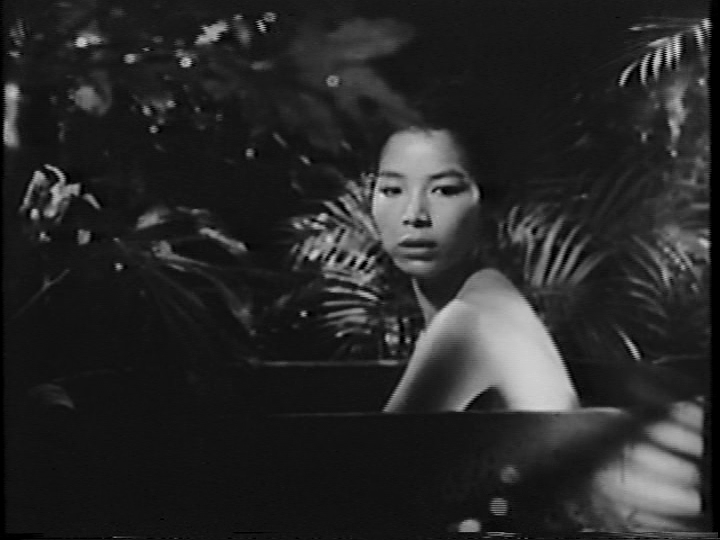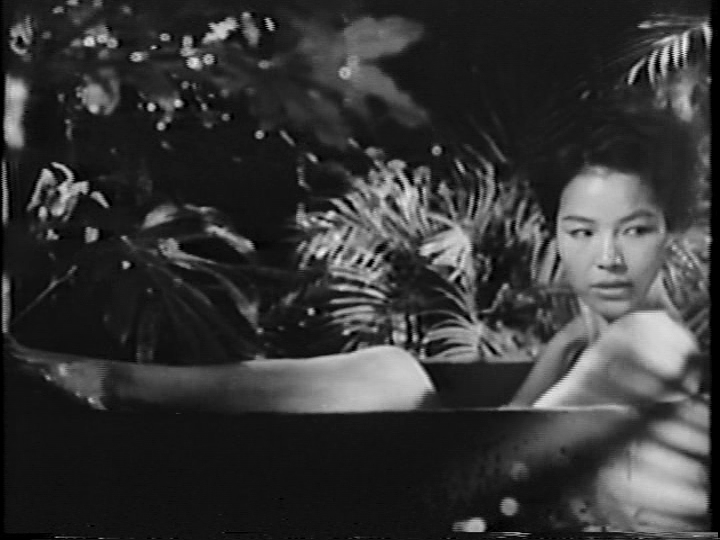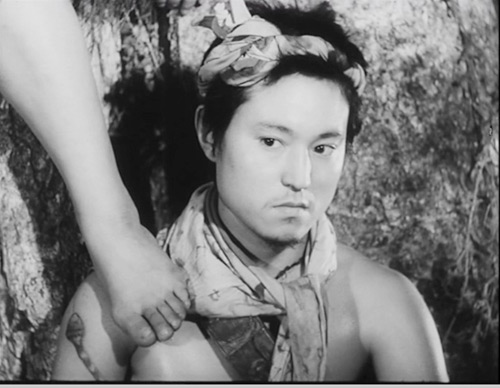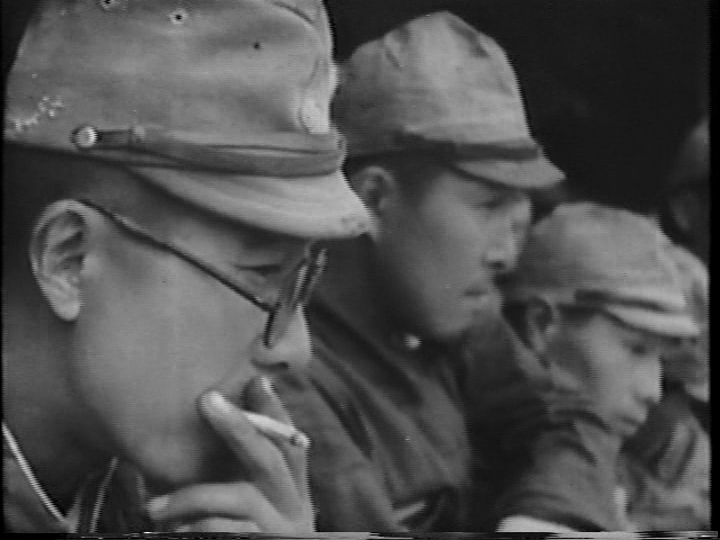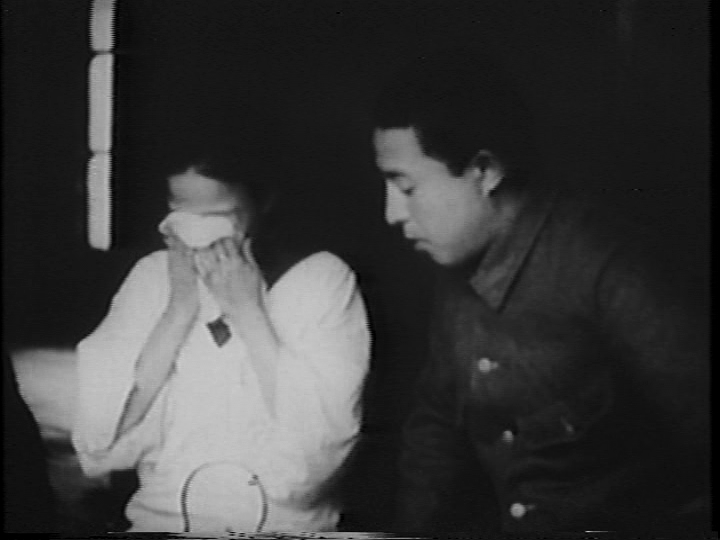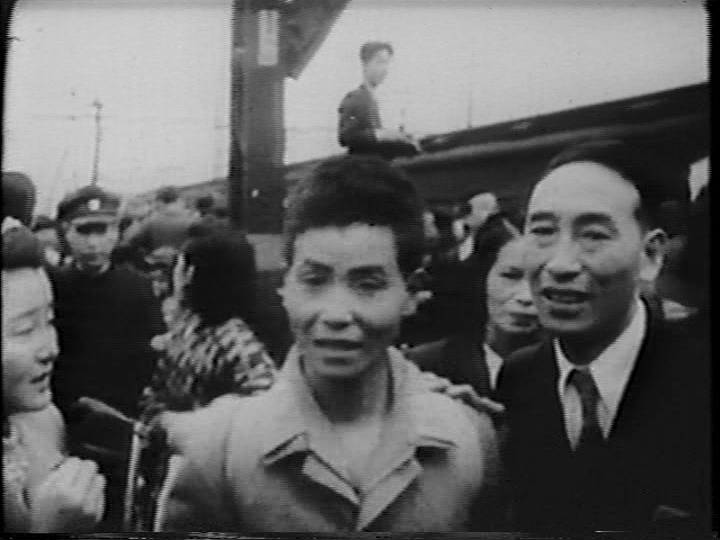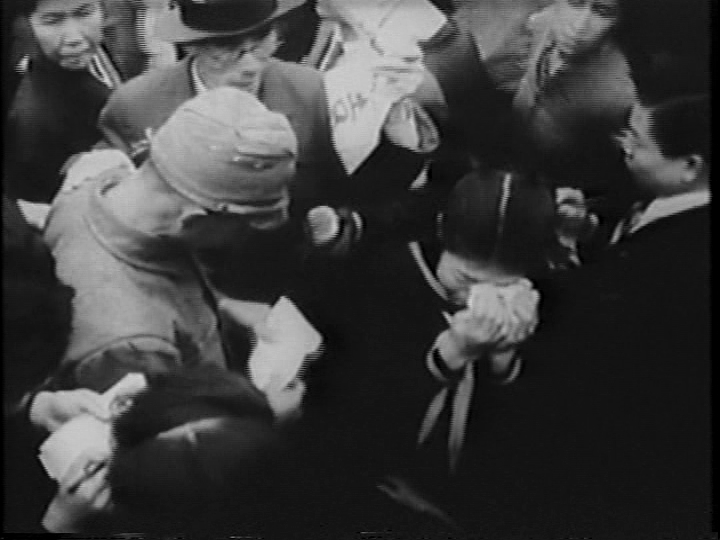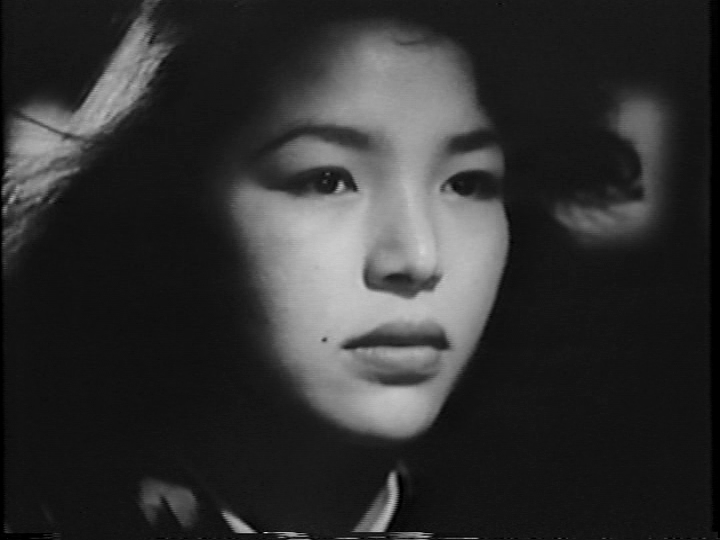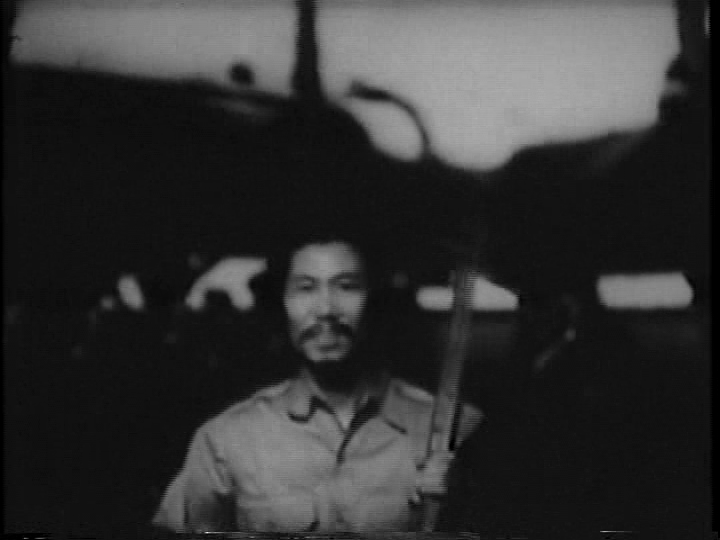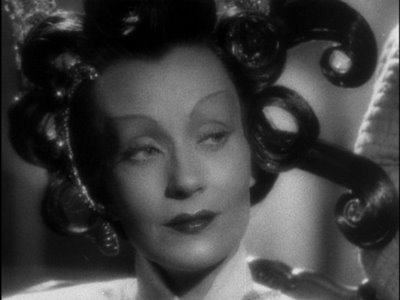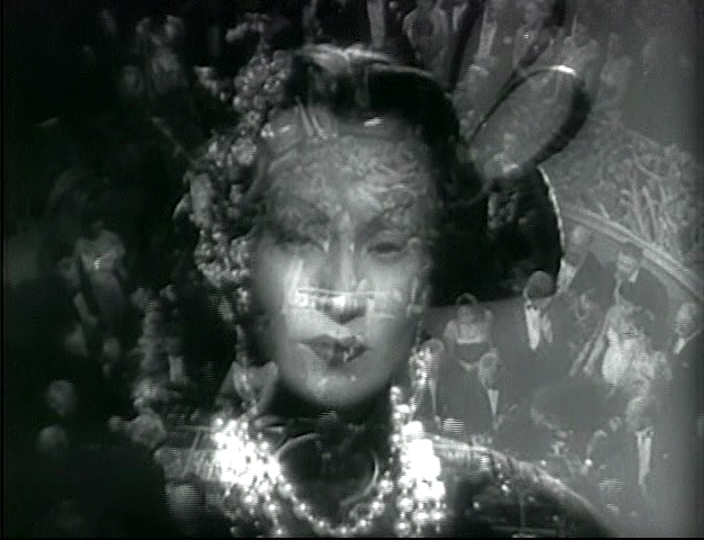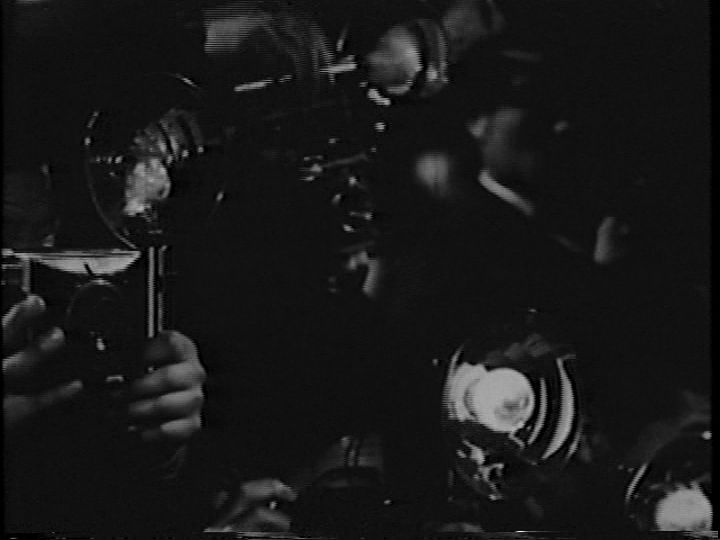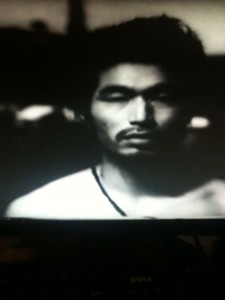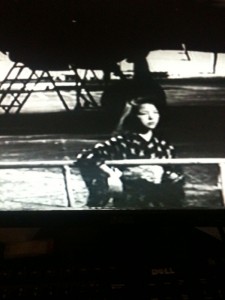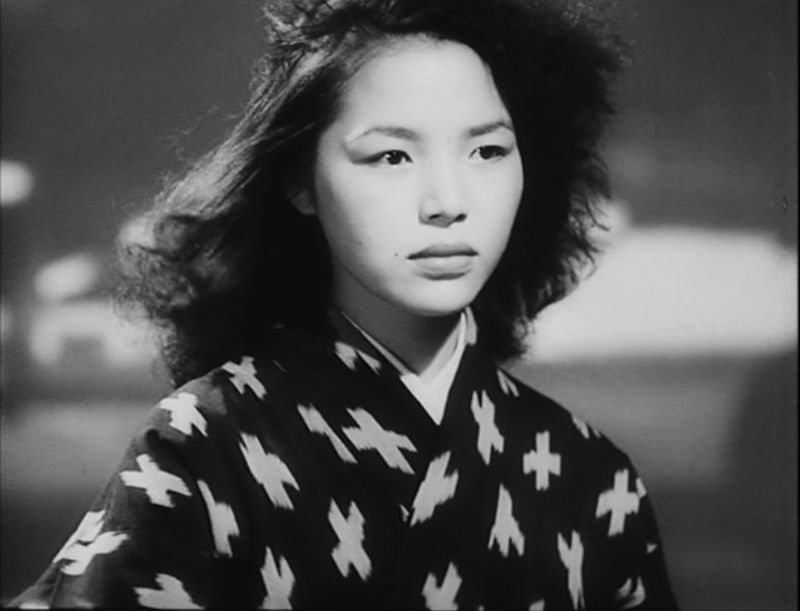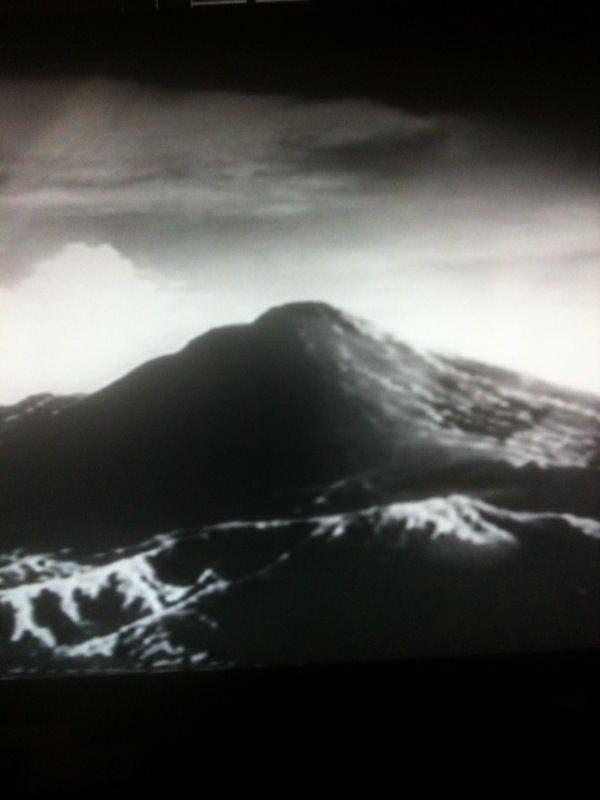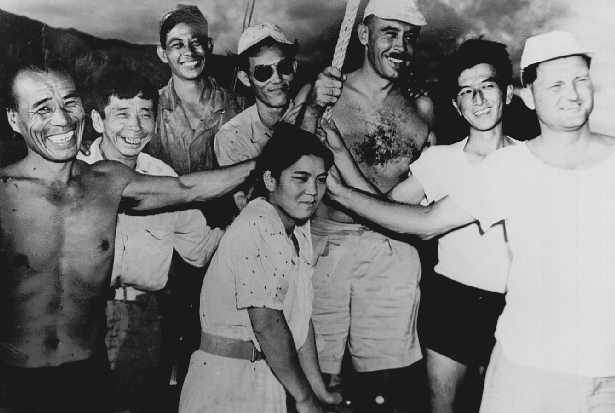To celebrate the release of Kino Lorber’s excellent DVD and Blu-Ray of Sternberg’s still-controversial and often misrepresented masterpiece, with many first-rate extras (and including both the 1953 and 1958 versions of the film), I’m posting this again. It first appeared in the January-February 1978 issue of Film Comment, with a few tweaks added in June 2010. I’ve also included, at the very end of this piece, a photograph of the real-life survivors of Anatahan that I found on the Internet. And to clarify the mimetic form of this piece, which has nine sections corresponding to the nine sections of Sternberg’s film, I’ve numbered each of those sections, for the first time.
This was written while I was teaching film at the University of California, San Diego and was able to study a 16-millimeter print of Anatahan that I was using in a course. This article was reprinted in my first collection, Placing Movies: The Practice of Film Criticism (Berkeley: University of California Press, 1995), where I added the following: “One of the critical commonplaces about THE SAGA OF ANATAHAN is that everything in the film with the exception of the ocean waves is artificial and created, and Sternberg has often been uncritically quoted as saying that the only thing he regretted in the film were these waves, precisely because they were not of his making. But to accept this statement is to ignore one of the key sequences in the film — the newsreel segment of Japanese soldiers returning home after the war — and to misconstrue the meaning of the artifice in the remainder of the film as a consequence.” I continue to find this sequence extremely moving, and suspect that my failure to find any stills from it on the Internet is a direct consequence of the misrepresentations of Sternberg as well as many of his critics. — J.R.
Aspects of ANATAHAN
1. Sound and Unsound Thinking.
The problem is that we’ve scarcely begun to learn how to listen. It can’t be mere coincidence that so many of the most exciting early sound features — DESERTER, ENTHUSIASM, THE GREAT CONSOLER, IVAN, LA NUIT DU CARREFOUR, THUNDERBOLT — are virtually inaccessible today, apart from rare archive screenings. More available touchstones, like BLACKMAIL and THE ONLY SON, are often just as flagrantly overlooked, or else — with certified classics such as THE BLUE ANGEL, M , and VAMPYR — chiefly reduced to their visual coefficients when they are analyzed in any depth.
The visual biases of auteurism have helped to amplify this neglect. It is difficult to get anything approximating the measures of CHIKAMATSU MONOGATARI, GERTRUD, LANCELOT OF THE LAKE, PLAYTIME, or UNE SIMPLE HISTOIRE if plot, acting, and direction remain the only measuring rods. And confronted with a self-proclaimed testament of a central auteurist figure that depends more on sound than on image, auteurist criticism can only stop short and gawk:
. . . Sternberg, in creating his last work, THE SAGA OF ANATAHAN, attempted much, and yet at the same time expressed himself with less clarity than in any of his earlier films. It is the work of an old man, of a supreme technician faced with facilities beneath his standards and a cast unequal to the pressures he placed on them.
. . . But if one accepts Sternberg as a great artist of the cinema, it follows that ANATAHAN must be a work of definite, if obscure merit. — John Baxter
. . . Sternberg himself regards ANATAHAN as his best film, a judgment both his defenders and detractors would probably reject. . . . Sternberg’s commentary, at times contrapuntal and at times apparently superfluous to the narrative, would appeal only to specialists in his career. — Andrew Sarris
In his own Sternberg study, Herman G. Weinberg performs the invaluable service of reproducing the text of Sternberg’s narration and bravely rallies to the film’s defense, although his arguments tend more toward hagiography than criticism: “How many film records do we have of great directors’ voices, in which we can study their personalities through their voices? Why are not ANATAHAN ‘s critics grateful for this?” Fortunately, the closed universe of ANATAHAN is still a good deal wider than the aficionados’ and specialists’ circle, where merit can remain definite but obscure only because it becomes answerable to a higher deity, such as director or “oeuvre.”
John Grierson said of Sternberg: “When a director dies, he becomes a photographer.” I would argue, in Sternberg’s defense, that when a director dies, he becomes a filmmaker. The industrial employee ended his career as a subsidized artist, thereby bidding farewell to the industry critics; and it would be better to come across THE SAGA OF ANATAHAN as a private message found in a bottle, unsigned and labeled “To whom it may concern.” Barring that possibility, it still demands to be examined through its own credentials. The only interesting commentaries on the film that I know of are Sternberg’s own, in Fun in a Chinese Laundry, and Claude Ollier’s remarkable (and untranslated) “Une Aventure de la lumière” (Cahiers du Cinéma no. 168). Some of the remarks below are indebted to each.
***
2. For Latecomers.
THE SAGA OF ANATAHAN, made by Sternberg in his late fifties, was financed by two Japanese producers and, as an opening title announces, shot in a studio constructed for that purpose in Kyoto. It has simultaneous Japanese dialogue delivered by actors and English narration recited by Sternberg, along with diverse kinds of on- and off-screen music and a highly selective series of sound effects. For its point of departure, it uses the true story of a group of Japanese sailors who were shipwrecked on a tiny island in the Marianas, already inhabited by a man (Kusakabe) and woman (Keiko), in 1944, and who refused to surrender to American forces until seven years after the end of the war — by which time several of the men had killed one another in fights over the woman. The film was released in 1953, and, according to Sternberg, received badly almost everywhere, including Japan.
***
3. Prerequisites.
A triumphant film about defeat, dealing with the effects of time and competition in a context that places itself outside all time and all competition, ANATAHAN establishes a multiple audiovisual web of artifice that becomes the precondition of its truth. To cope with it, auteurism has to invert its usual priorities. It must accept that the cornerstone of Sternberg’s reputation, his visual obsessions (from Dietrich to nets to bric-à-brac to textures of fog and smoke) are denied their Hollywood upholsteries and either flattened to the point of parody, or, a formula that seems more accurate, x-rayed into a diagram that emphasizes their limitations while reducing their more seductive illusionist aspects. And apart from the dull procession of compositions with dead-center framing — most of it devoted to the kind of closeted Sternbergian space that makes the diverse areas on Anatahan resemble the interchangeable parts of a pipe organ — one has to contend with an unmemorable cast whose dialogue chiefly goes untranslated and most of whose members are nearly as undifferentiated as the studio trees sprayed with aluminum paint.
This is a lot to accept, particularly if one has learned to look at films cut into such disassociated sections as story, dialogue, acting, photography, sound, and sets — like a Variety reviewer or a butcher slicing up a carcass to price the relative worth of its separate parts. Yet if one can deal with it as a whole and living body with its own rules of functioning, the relative insubstantiality of the images becomes an important aspect of that body’s strength. From one point of view, it is a formalism run amok, whose overall texture has become so flat, hard, and consistent that one is finally able to walk on it like a floor.
That’s why any stills accompanying this article must inevitably lie about the film; they are little more than ornamental plates for the sounds to reverberate against — a site for contemplation, not enchantment. With your eyes shut, it couldn’t possibly work. As with the “empty” shots of Place d’Italie near the end of Rivette’s OUT 1: SPECTRE , there has to be a neutral and open visual representation in order for a structured fiction to take root in the spectator’s mind (as opposed to on the screen); black leader would only seem like a hiccup. ANATAHAN ‘s tangled white emptiness is better.
Most films ask us to walk over soundtracks that are as formally repetitive as ANATAHAN’s frames, and we don’t even question the process; we’re happy to accept words, noises, and music as visual cues, but have trouble accepting images as sounding-boards. Not that Sternberg makes it easy. Depending, for most Western viewers, upon the unintelligibility of the Japanese dialogue to fulfill an abstract role in the film that is in some ways comparable to its visual texture, and purporting to speak for his characters as well as about them, he establishes a distance from his materials that many find inhuman. But this alienation is only the other side of Sternberg’s intimacy with his subject and his audience, and the problems it creates are inseparable from the rare achievements it makes possible.
***
4. “Anatahan, c’est moi.”
Since two o’clock yesterday afternoon . . . I have been writing Bovary. . . . It is a delicious thing to write, whether well or badly — to be no longer yourself but to move in an entire universe of your own creating. Today, for instance, man and woman, lover and beloved, I rode in a forest on an autumn afternoon under the yellow leaves, and I was also the horse, the leaves, the wind, the words my people spoke, even the red sun that made them half-shut their love-drowned eyes. — Letter of Gustave Flaubert to Louise Colet, 23 December 1853
. . . M. Mauriac has put himself first. He has chosen divine omniscience and omnipotence. But novels are written by men and for men. In the eyes of God, Who cuts through appearances and goes beyond them, there is no novel, no art, for art thrives on appearances. God is not an artist. Neither is M. Mauriac. — Jean-Paul Sartre, “François Mauriac and Freedom”
One needn’t try to reconcile these two quotations here. Each has something decisive to say about ANATAHAN , from the respective vantage points of artist and critic. There’s no question that use of the first person plural and foreknowledge of future events in the narration (“And we were to be here seven long years”) denies the characters any freedom; whether it denies us any freedom is another matter. As the only Sternberg film predicated on the absence of love, ANATAHAN focuses exclusively on male passion and its consequences, a subject that for Sternberg has never had much relation to freedom. But ANATAHAN, unlike earlier Sternberg, is more interested in examining this passion than in arousing it — thereby allowing the spectator an unprecedented amount of freedom.
***
5. Keiko.
Not only a character, but a sound worked through countless variations: cake-o, kay-ko, keck-ho, even key-ko when the shriller actors call out her name. The cuckoo, cock crow, and implicit cuckold of THE BLUE ANGEL are never far away; here the sound is linked aurally to the rattle of the shellcurtain that covers the entrance to Keiko’s hut. Kusakabe — identified by Claude Ollier as Sternberg’s surrogate until he dies, and the last of the dead men to appear in the final sequence — is also a four-syllable figure that rhythmically echoes certain phrases in the Okinawa folk song sung by the men and heard repeatedly in the film: Anatahan itself, though accented differently, has a related lilt. A pair of triplets moving up the scale in the score recurs as often as the printed dates, and the countless shots and sounds of waves, all of which help to make the film’s abstraction of time as systematic as its reduction of space.
***
6. The narration’s first person plural
is reportedly derived from a published account of the Anatahan incident by Michiro Maruyama [1], the musician whose counterpart in the film fashions a stringed instrument (with which he accompanies the Okinawa folk song) out of the wreckage of a B-29 — an act suggesting that he, too, is a Sternberg surrogate, for both men make music out of deadly foreign materials. This first-person narration shifts to the singular only twice, marking the disappearance of Keiko from the island (“Long ago, I heard her say that if she had wings she would fly home,” as she waves both arms to signal an American vessel) and her phantom reappearance on a Japanese airfield in the final sequence (“And if I know anything at all about Keiko, she too must have been there,” the last line in the film). But to complicate matters, Maruyama himself figures only once in the narration, when, like all the other individual characters, he is referred to in the third person.
Thus the “I” of ANATAHAN remains as ambiguously unplaced as the “we,” which changes its referent every time a character dies or is mentioned in third person, and the spectator is obliged to readjust to this shifting space. Equally shifting is the relationship of these unstable pronouns to the visible events occurring before, during, or after the narrator’s descriptions or translations. While we observe Keiko and three of the men inside her hut, we’re told that “At all these events that began now, we were not present. We were not inside that hut. . . . Even had we been there, all our versions would differ.” (Whose version, then, are we watching?) As we go on to witness the murders of two of the men, the narrator reports that “we can only guess” or “surmise” how each one took place, although, in the latter case, “two bullets buried deep in Nishio’s back” — which we hear being fired, but don’t see in the victim’s woundless back — “helped us to guess correctly.”
If we regard the commentary as our primary source of knowledge, what we see are only “guesses” about what happened; otherwise we must assume that, as writer-director-photographer, Sternberg is privy to information that he denies himself as narrator. Yet if we can also “guess correctly” about something “we can only surmise,” what we see can only exist in some no-man’s land between the two sides of this contradiction.
It is on this same terrain vague that we must respond to the Collected Wit and Wisdom of Sternberg, in his Statements About the Human Condition: “The difference between a child and grown-up is in the way the brain is in control of the emotions.” “A good part of our life is spent in trying to gain the esteem of others; to gain self-esteem, however, we waste little time.” “The relationship between a man and a woman is based on emotions which often may not be understood by others — who in one way or another fumble just as much.” In practical terms, the truth or falsity of any of these explanations is a function of the degree to which we can imaginatively inhabit any given conjuncture of data and interpretation, sound and image, in subjective rather than objective terms — how far, in short, we can occupy the narrator’s “we.” Without the extravagance of a Dietrich or a Hollywood studio, camp irony is no longer an available option; this time Sternberg means business. And, as he laconically notes in his autobiography, “It is most probably an error to assume that human beings will pay admission to inspect their own mistakes rather than the mistakes of others.”
***
7. Formal Divisions.
The nine-reel division of ANATAHAN in 35-millimeter corresponds to the nine distinct sections of narration. The usual two-reel division in 16-millimeter further helps to clarify the film’s symmetry by counter-posing the newsreel footage at the end of the first reel [see first photo below] — depicting the return of Japanese troops at the end of the war — with the fictionalized homecoming of the Anatahan survivors at the end of the second. Emotionally and conceptually, these are the two peaks of the film, representing the respective extremes of “real” and “artificial” that are attained, and their interrelationship is underlined by the narration accompanying each. Sternberg’s monotonous, deadpan delivery (a rare form of self-denial that fulfills his own theory of acting, supporting Elliott Stein’s contention that Sternberg has secret affinities with Bresson) allows the music’s emotional ascendance on these occasions to be as majestic as the Monteverdi Magnificat at the end of MOUCHETTE, whereas the words are empowered to live on their own meanings. These parallel “voices” and “narratives” are then fused by the wordless musical choir, which becomes audible in each case the moment that families are evoked, through a gradual rise of volume that creates a throbbing plurality of voices:
(1) (Sounds of plane, then boat whistle over strings.) But far away in Japan, our country had faced the reality of defeat. The Emperor had called the troops home. And millions streamed back — away from the nightmare of trying to conquer a world. Father and son — wife and husband — mothers (harp glissando), daughters —friends — (Choir becomes audible over strings) all those who feared they might never meet again. The men who had fought in vain came back home — though there were many that did not come back.
(2) (Sounds of plane, then noisy crowd over strings.) We were back in Japan — heroes to all but ourselves —(Choir and strings rise in volume) brother and sister were there — our friends were waiting — father and mother — our neighbors came. We saw our wives — our children — now seven years older — we would have to earn their affection all over again — we were home — at last. (Sounds of wind and sea; music ceases.) And if I know anything at all about Keiko — she too — must have been there. (Wind continues over aural flashback of Okinawa folk song, rising in volume, followed by laughter and dialogue, then a reprise of the song, slowly fading until strings take over the end title.)
***
8. The first homecoming
is the most audacious gesture of ANATAHAN. After restricting himself entirely to an artificial universe of representations, from toy boat and painted clouds to studio island, it dares to show us real Japanese soldiers in documentary footage returning to their homes and families, fusing private obsessions with objective history. As a cosmic statement of surreal equivalences that lies at the root of the film this is anticipated in THE SHANGHAI GESTURE by the slow dissolve of the casino over Ona Munson’s face, which similarly blends the universal with the personal. What makes the conceit much more shocking, beautiful, and moving here is the fact that the kinds of representation involved are at infinitely greater odds with one another. If the tone of this sequence, like the last, can only be called religious, this may be because it requires the equivalent of religious faith to believe, with Sternberg, that sound alone can bridge these irreconcilable realms. In this respect, both sequences parallel the end of Dreyer’s ORDET by performing miracles.
***
9. Second homecoming.
“This film is an attempt to photograph a thought,” reads the opening title of Sternberg’s first film — a project only fulfilled completely at the very end of his last. As each Anatahan survivor appears in turn behind a barrage of flashbulbs in foreground, in front of a giant rear-projection of a landed plane (in a studio approximation of a Japanese airstrip that looks phonier than anything else in the film), the narration conjures up still another “correct” surmise by proposing Keiko, who then appears as a phantom in relation to the phony set. This illusion within an illusion occurs solely on the pretext that Sternberg — speaking finally in his own person — imagines her there, and like a multiplication of two minus signs, this conjugation offers us, for the second time in the film, a purely documentary truth.
Then, after each survivor makes his appearance, in a parody of a curtain call — an ironic finale to Sternberg’s lifelong denigration of actors — there is an aural flashback to the Tsundara Bushi sung on the island, beginning over Keiko’s face. Each character who died on Anatahan emerges in turn from the darkness, walking directly toward the camera between reverse-angle closeups of Keiko while the equally ghostly folk song fades in and out on the sound track. With this confrontation, the film finally arrives at a coexistence of tenses, identities, significations, and essences where the living and the dead, male and female, abstract and concrete, past and present, dreamer and dreamed can all speak together within the same discourse, on the same plane of artifice and truth, woven together into the contours of a single expression. With nowhere left to go, the film then cuts from Keiko’s face to a mountain (which oddly evokes the Paramount logo) — not so much an equivalence as a full stop.
Note
1. I’ve been unable to determine whether this account is available in English, but I have been able to locate the Life magazine article (16 July 1951) that originally inspired the film, where one discovers several details at variance with the plot: “Mrs. Kazuko Higa,” the real-life model of Keiko, was ordered by Captain Ishida to marry a crew member who “soon died mysteriously”; five of the survivors discovered when they returned to Japan that their wives had remarried. The individual who refuses to surrender and leave the island with the others is presumably Sternberg’s own invention.
— Film Comment, January–February 1978

